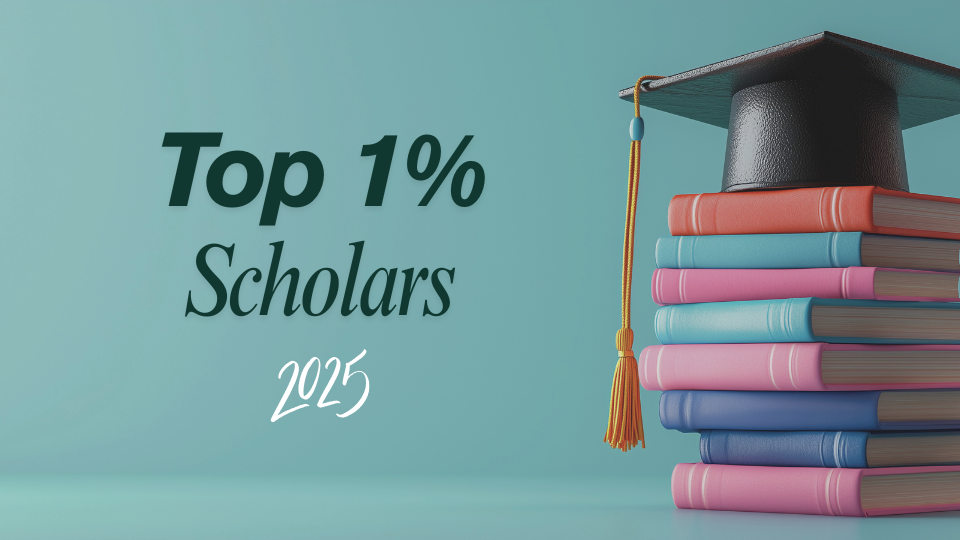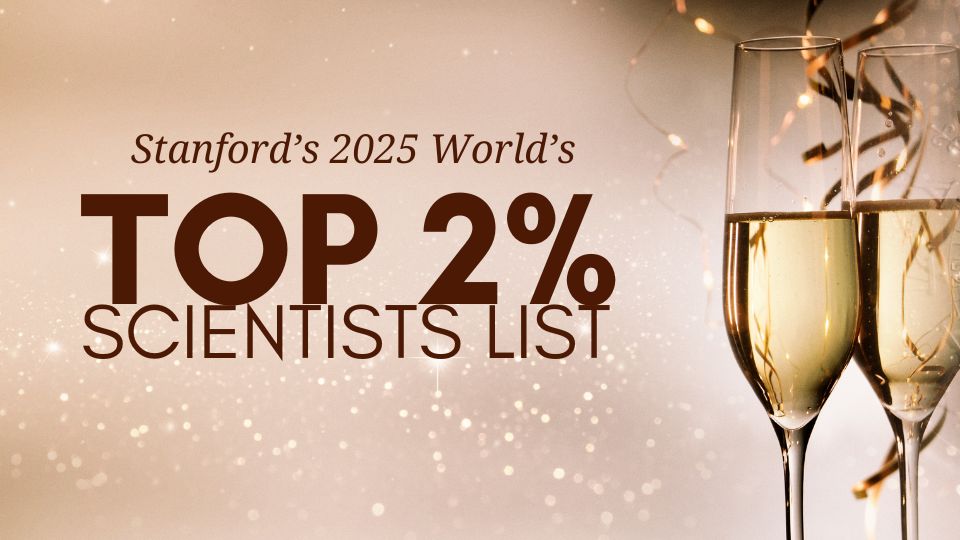
HKU Shines in Stanford’s 2025 World’s Top 2% Scientists List
— by Yining Huang, Ollie Zhang, Stella Chow
Stanford University released the latest World’s Top 2% Scientists list in mid‑September 2025, recognizing leading researchers worldwide. The ranking is presented in two complementary views: a career‑long assessment that captures cumulative influence from 1960–2024 and a single recent year view that measures research influence during 2024. Together, these lists highlight both lifetime achievement and current research strength. The datasets are publicly available via the Elsevier Data Repository: https://elsevier.digitalcommonsdata.com/datasets/btchxktzyw/8.
About the Top 2% Scientist
Scientists are grouped into 22 broad fields and 174 subfields according to where they publish most. Inclusion in the list requires being in the top 2% of a subfield by a composite citation score (c‑score). Derived from Scopus, the c‑score combines standardized citation counts, h‑index, the co‑authorship‑adjusted hm‑index, and citations weighted by authorship position (single, first, and last author). The methodology emphasizes citation impact rather than publication volume.
Limitation
This methodology is based on citation metrics, which are with inherent limitations. Researchers not appearing on the list may simply have a composite indicator value below the inclusion threshold, which does not necessarily reflect the quality of their work. These metrics should be interpreted with caution.
HKU’s 2025 results at a glance
The University of Hong Kong (HKU) delivered a strong performance in the 2025 results. A total of 434 HKU scholars are listed for single‑year impact (2024), and 376 are recognized for career‑long impact. Within these cohorts, 53 HKU scholars rank among the global Top 100 in their subfields for annual impact, while 42 are in the Top 100 for career‑long influence, underscoring both depth and durability of excellence across the university.
HKU scholars across subject fields
The breadth of HKU’s disciplinary reach is notable. In the single‑year view, HKU scholars across 104 subfields are recognized as Top 2% Scientists, compared with 93 subfields in the career‑long analysis—evidence of widening recent impact.
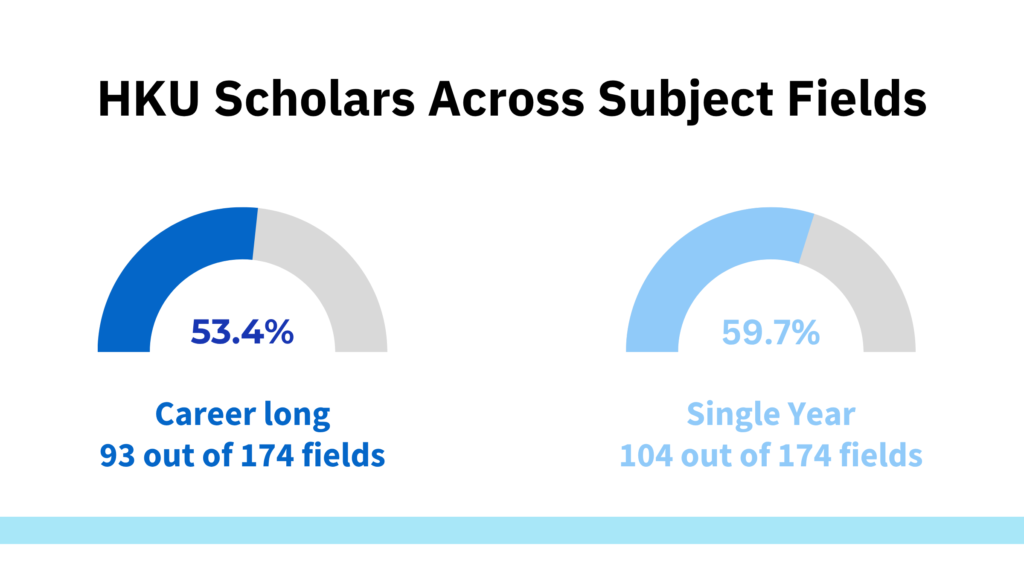
HKU scholars across ranked subject fields (Career‑long)
For career‑long influence, HKU scholars among 93 subfields are recognised to be among top 2% worldwide, with the largest representations in Education (24), Oncology & Carcinogenesis (21), and Dentistry (20). Other areas with sustained strength include Artificial Intelligence & Image Processing, Microbiology, Surgery, Building & Construction, Gastroenterology & Hepatology, General & Internal Medicine, Geological & Geomatics Engineering, Networking & Telecommunications, and Virology.
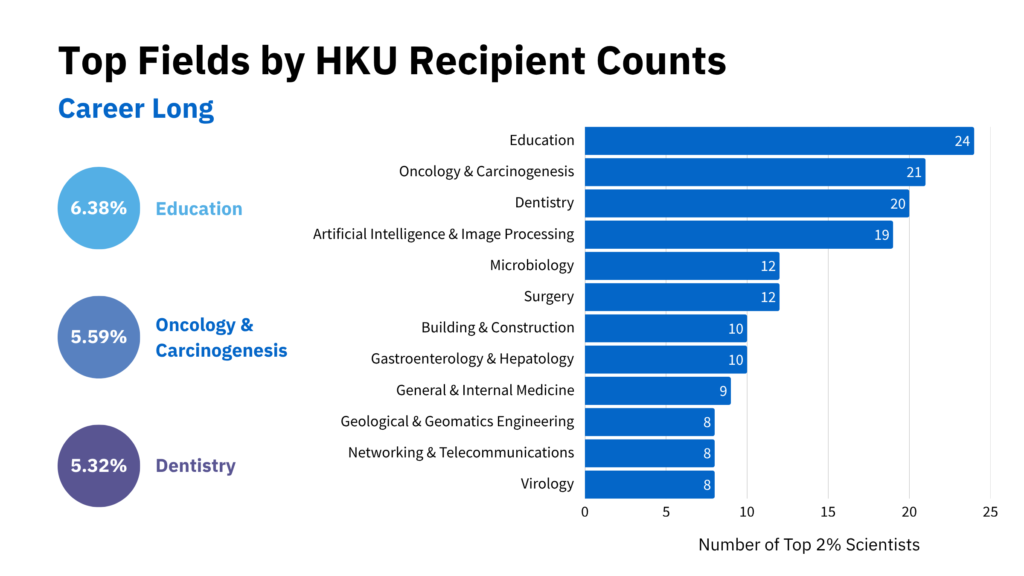
HKU scholars across subject fields (Single‑year)
In the single‑year assessment, HKU scholars among 104 subfields are recognised, with Artificial Intelligence & Image Processing, Dentistry, and Education each featuring 26 HKU researchers—the top counts this year. They are followed by Oncology & Carcinogenesis, Microbiology, General & Internal Medicine, Building & Construction, Virology, Gastroenterology & Hepatology, Geological & Geomatics Engineering, Industrial Engineering & Automation, Surgery, Applied Physics, Languages & Linguistics, and Organic Chemistry. This mix reflects the university’s established biomedical and education strengths and its accelerating momentum in Artificial Intelligence (AI).
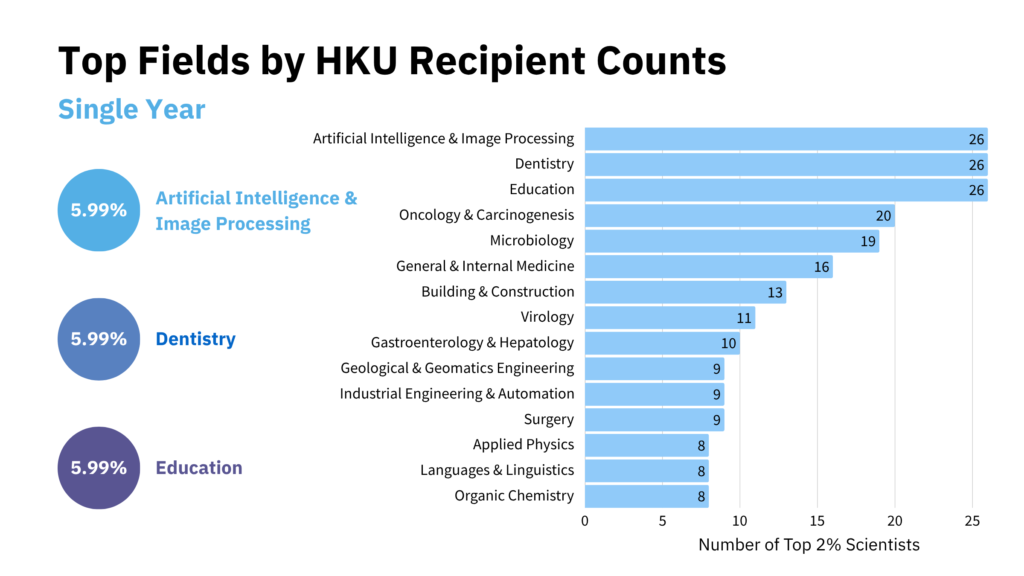
HKU researchers in the global Top 20 (Career-Long)
Six researchers from HKU are among the Top 20 in their respective subfields based on career-long impact, reflecting the global influence of their lifetime research contributions. These scholars are listed below (in alphabetical order of surnames).
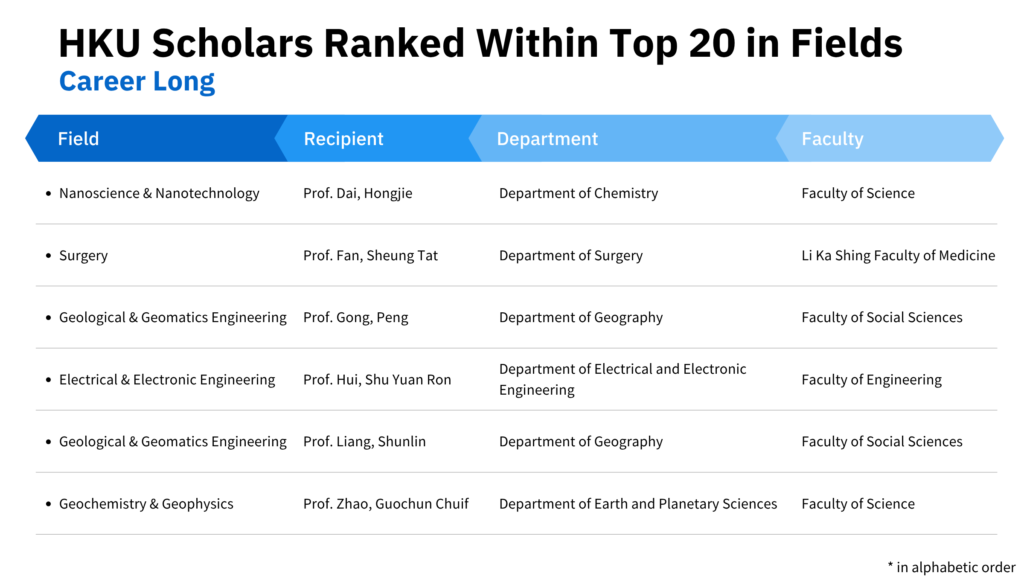
HKU researchers in the global Top 20 (Single‑year)
Seven HKU researchers are ranked within the Top 20 in their respective subfields for their current research excellence. These scholars are listed below (in alphabetical order of surnames).
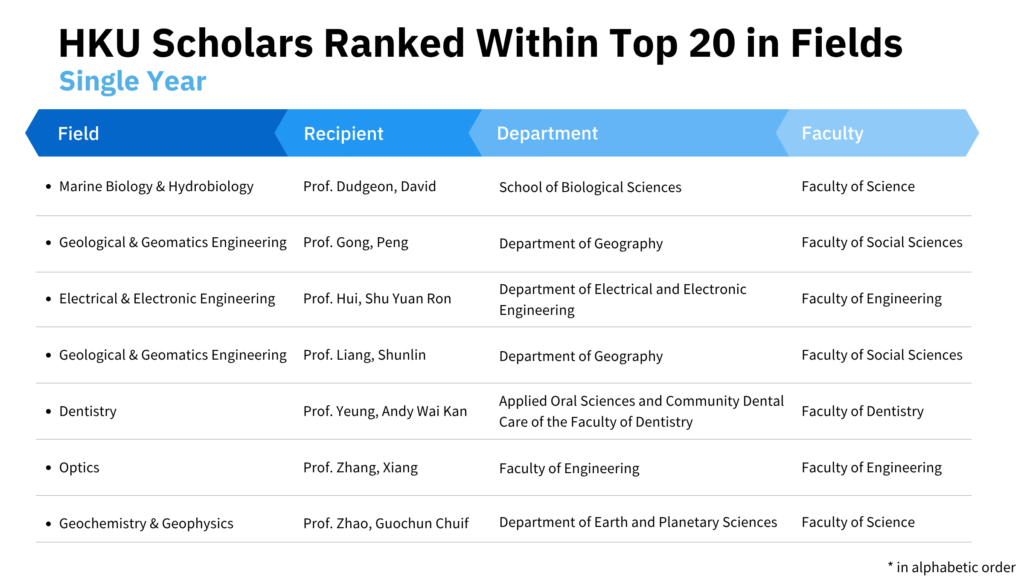
Conclusion
The recognition of HKU researchers in the 2025 Top 2% Scientists lists reflects both the depth and momentum of our research: 434 scholars included for single-year impact and 376 for lifetime impact. While acknowledging that citation-based metrics have limitations and may not fully capture research quality or societal impact, we are glad to see HKU scholars’ research excellence applauded globally.
References
Ioannidis, John P.A. (2025), “August 2025 data-update for “Updated science-wide author databases of standardized citation indicators””, Elsevier Data Repository, V8, doi: 10.17632/btchxktzyw.8
Ioannidis, J.P.A., Boyack, K.W., & Baas, J. (2020). Updated science-wide author databases of standardized citation indicators. PLoS Biology 18(10): e3000918. https://doi.org/10.1371/journal.pbio.3000918
Ioannidis, J.P.A., Baas, J., Klavans, R., & Boyack, K.W. (2019). A standardized citation metrics author database annotated for scientific field. PLoS Biology 17(8): e3000384. https://doi.org/10.1371/journal.pbio.3000384
Ioannidis, J.P.A., Klavans, R., & Boyack, K.W. (2016). Multiple Citation Indicators and Their Composite across Scientific Disciplines. PLoS Biology 14(7): e1002501. https://doi.org/10.1371/journal.pbio.1002501

